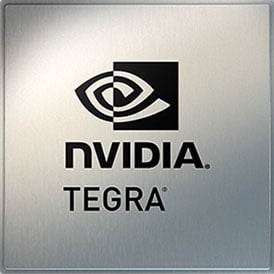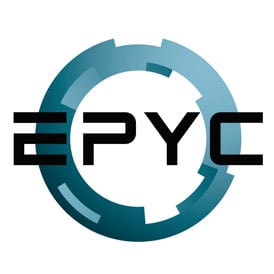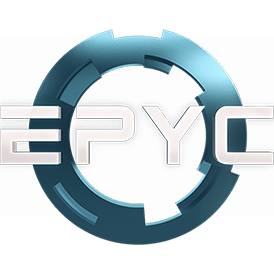Nintendo Switch vs AMD EPYC 7573X
Last updated:
CPU comparison with benchmarks

|

|
|
| Nintendo Switch | AMD EPYC 7573X | |
CPU comparisonIn this CPU comparison, we compare the Nintendo Switch and the AMD EPYC 7573X and use benchmarks to check which processor is faster.
We compare the Nintendo Switch 8 core processor released in Q1/2017 with the AMD EPYC 7573X which has 32 CPU cores and was introduced in Q2/2022. |
||
| NVIDIA Tegra (2) | Family | AMD EPYC (129) |
| NVIDIA Tegra X1 (2) | CPU group | AMD EPYC 7003 (29) |
| 2 | Generation | 3 |
| Cortex-A57/-A53 | Architecture | Milan (Zen 3) |
| Mobile | Segment | Desktop / Server |
| -- | Predecessor | -- |
| -- | Successor | -- |
|
|
||
CPU Cores and Base FrequencyThe Nintendo Switch is a 8 core processor with a clock frequency of 1.00 GHz (1.75 GHz). The processor can compute 8 threads at the same time. The AMD EPYC 7573X clocks with 2.80 GHz (3.60 GHz), has 32 CPU cores and can calculate 64 threads in parallel. |
||
| Nintendo Switch | Characteristic | AMD EPYC 7573X |
| 8 | Cores | 32 |
| 8 | Threads | 64 |
| hybrid (big.LITTLE) | Core architecture | normal |
| No | Hyperthreading | Yes |
| No | Overclocking ? | No |
| 1.00 GHz (1.75 GHz) 4x Cortex-A57 |
A-Core | 2.80 GHz (3.60 GHz) 32x Zen 3 |
| 1.00 GHz (1.75 GHz) 4x Cortex-A53 |
B-Core | -- |
Integrated graphics (iGPU)Graphics (iGPU) integrated into the processor not only enable image output without having to rely on a dedicated graphics solution, but can also efficiently accelerate video playback. |
||
| NVIDIA Tegra X1 (Maxwell) | GPU | no iGPU |
| 0.30 GHz | GPU frequency | -- |
| 0.77 GHz | GPU (Turbo) | -- |
| 1 | GPU Generation | -- |
| 20 nm | Technology | |
| 1 | Max. displays | |
| 2 | Compute units | -- |
| 256 | Shader | -- |
| No | Hardware Raytracing | No |
| No | Frame Generation | No |
| 2 GB | Max. GPU Memory | -- |
| 12 | DirectX Version | -- |
Hardware codec supportA photo or video codec that is accelerated in hardware can greatly accelerate the working speed of a processor and extend the battery life of notebooks or smartphones when playing videos. |
||
| NVIDIA Tegra X1 (Maxwell) | GPU | no iGPU |
| Decode | Codec h265 / HEVC (8 bit) | No |
| Decode | Codec h265 / HEVC (10 bit) | No |
| Decode / Encode | Codec h264 | No |
| Decode | Codec VP9 | No |
| Decode | Codec VP8 | No |
| No | Codec AV1 | No |
| Decode | Codec AVC | No |
| Decode | Codec VC-1 | No |
| Decode / Encode | Codec JPEG | No |
Memory & PCIeUp to 4 GB of memory in a maximum of 2 memory channels is supported by the Nintendo Switch, while the AMD EPYC 7573X supports a maximum of 4096 GB of memory with a maximum memory bandwidth of 204.8 GB/s enabled. |
||
| Nintendo Switch | Characteristic | AMD EPYC 7573X |
| LPDDR4-3200 | Memory | DDR4-3200 |
| 4 GB | Max. Memory | 4096 GB |
| 2 (Dual Channel) | Memory channels | 8 (Octa Channel) |
| 25.6 GB/s | Max. Bandwidth | 204.8 GB/s |
| No | ECC | Yes |
| 2.50 MB | L2 Cache | 32.00 MB |
| -- | L3 Cache | 768.00 MB |
| -- | PCIe version | 4.0 |
| -- | PCIe lanes | 128 |
| -- | PCIe Bandwidth | 252.0 GB/s |
Thermal ManagementThe Nintendo Switch has a TDP of 5 W. The TDP of the AMD EPYC 7573X is 280 W. System integrators use the TDP of the processor as a guide when dimensioning the cooling solution. |
||
| Nintendo Switch | Characteristic | AMD EPYC 7573X |
| 5 W | TDP (PL1 / PBP) | 280 W |
| -- | TDP (PL2) | -- |
| -- | TDP up | -- |
| 5 W | TDP down | 225 W |
| -- | Tjunction max. | -- |
Technical detailsThe Nintendo Switch has 2.50 MB cache and is manufactured in 20 nm. The cache of AMD EPYC 7573X is at 800.00 MB. The processor is manufactured in 7 nm. |
||
| Nintendo Switch | Characteristic | AMD EPYC 7573X |
| 20 nm | Technology | 7 nm |
| Chiplet | Chip design | Chiplet |
| Armv8-A (64 bit) | Instruction set (ISA) | x86-64 (64 bit) |
| -- | ISA extensions | SSE4a, SSE4.1, SSE4.2, AVX2, FMA3 |
| -- | Socket | SP3 |
| None | Virtualization | AMD-V, SVM |
| No | AES-NI | Yes |
| Operating systems | Windows 10, Linux | |
| Q1/2017 | Release date | Q2/2022 |
| -- | Release price | 5590 $ |
| show more data | show more data | |
Rate these processors
Geekbench 5, 64bit (Single-Core)
Geekbench 5 is a cross plattform benchmark that heavily uses the systems memory. A fast memory will push the result a lot. The single-core test only uses one CPU core, the amount of cores or hyperthreading ability doesn't count.
|
|
Nintendo Switch
8C 8T @ 1.75 GHz |
||
|
|
AMD EPYC 7573X
32C 64T @ 3.60 GHz |
||
Geekbench 5, 64bit (Multi-Core)
Geekbench 5 is a cross plattform benchmark that heavily uses the systems memory. A fast memory will push the result a lot. The multi-core test involves all CPU cores and taks a big advantage of hyperthreading.
|
|
Nintendo Switch
8C 8T @ 1.00 GHz |
||
|
|
AMD EPYC 7573X
32C 64T @ 2.80 GHz |
||
Geekbench 6 (Single-Core)
Geekbench 6 is a benchmark for modern computers, notebooks and smartphones. What is new is an optimized utilization of newer CPU architectures, e.g. based on the big.LITTLE concept and combining CPU cores of different sizes. The single-core benchmark only evaluates the performance of the fastest CPU core, the number of CPU cores in a processor is irrelevant here.
|
|
Nintendo Switch
8C 8T @ 1.75 GHz |
||
|
|
AMD EPYC 7573X
32C 64T @ 3.60 GHz |
||
Geekbench 6 (Multi-Core)
Geekbench 6 is a benchmark for modern computers, notebooks and smartphones. What is new is an optimized utilization of newer CPU architectures, e.g. based on the big.LITTLE concept and combining CPU cores of different sizes. The multi-core benchmark evaluates the performance of all of the processor's CPU cores. Virtual thread improvements such as AMD SMT or Intel's Hyper-Threading have a positive impact on the benchmark result.
|
|
Nintendo Switch
8C 8T @ 1.00 GHz |
||
|
|
AMD EPYC 7573X
32C 64T @ 2.80 GHz |
||
iGPU - FP32 Performance (Single-precision GFLOPS)
The theoretical computing performance of the internal graphics unit of the processor with simple accuracy (32 bit) in GFLOPS. GFLOPS indicates how many billion floating point operations the iGPU can perform per second.
|
|
Nintendo Switch
NVIDIA Tegra X1 (Maxwell) @ 0.77 GHz |
||
|
|
AMD EPYC 7573X
@ 0.00 GHz |
||
Devices using this processor |
|
| Nintendo Switch | AMD EPYC 7573X |
| Nintendo Switch | Unknown |
Popular comparisons containing this CPUs
back to index



